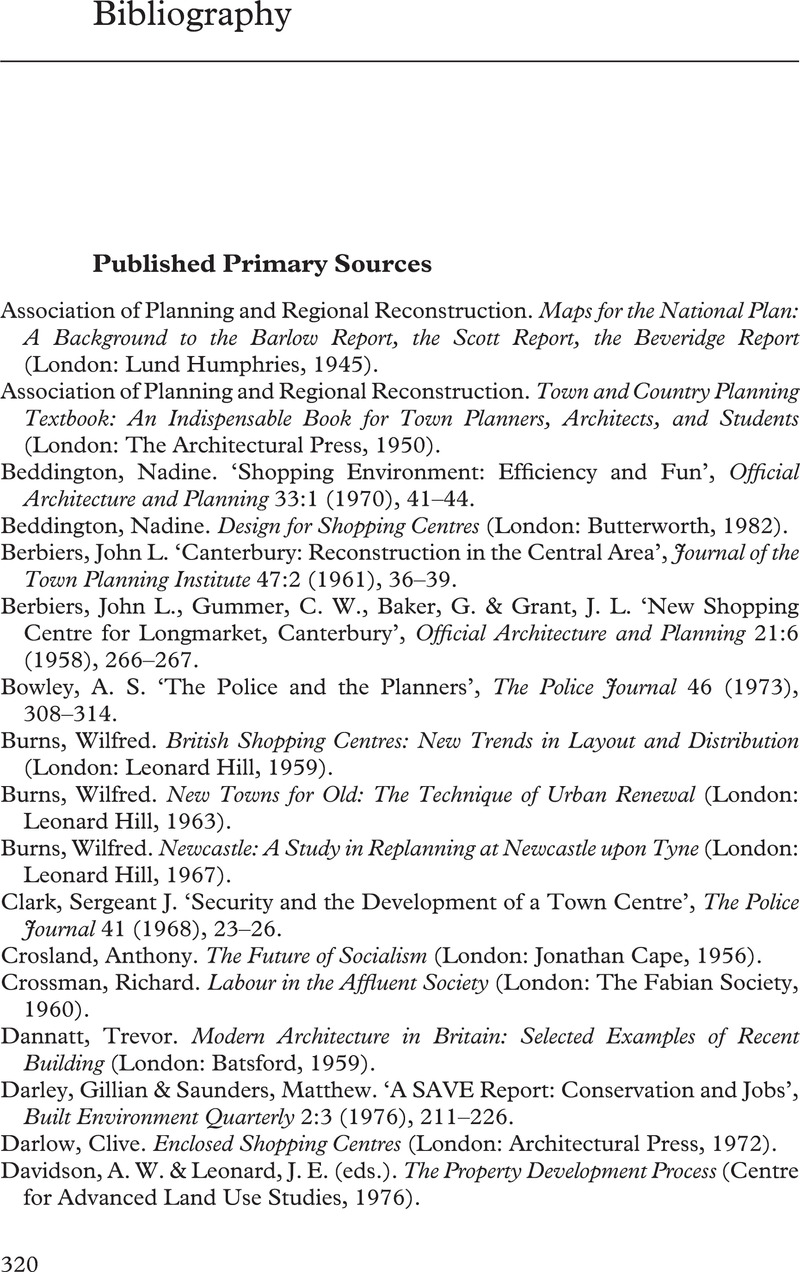 The Life and Death of the Shopping City
The Life and Death of the Shopping City Book contents
- The Life and Death of the Shopping City
- Modern British Histories
- The Life and Death of the Shopping City
- Copyright page
- Dedication
- Contents
- Figures
- Acknowledgements
- Introduction
- 1 Reconstructing Retail in the 1940s
- 2 Cities in the Age of Affluence
- 3 Making the Modern Shopping City
- 4 The Politics of Partnership
- 5 Landscapes of Leisure
- 6 Demand and Discontent in the Shopping City
- 7 Triumph of the Shopping City
- Conclusion
- List of Archives and Abbreviations
- Bibliography
- Index
- References
Bibliography
Published online by Cambridge University Press: 31 March 2022
- The Life and Death of the Shopping City
- Modern British Histories
- The Life and Death of the Shopping City
- Copyright page
- Dedication
- Contents
- Figures
- Acknowledgements
- Introduction
- 1 Reconstructing Retail in the 1940s
- 2 Cities in the Age of Affluence
- 3 Making the Modern Shopping City
- 4 The Politics of Partnership
- 5 Landscapes of Leisure
- 6 Demand and Discontent in the Shopping City
- 7 Triumph of the Shopping City
- Conclusion
- List of Archives and Abbreviations
- Bibliography
- Index
- References
Summary

- Type
- Chapter
- Information
- The Life and Death of the Shopping CityPublic Planning and Private Redevelopment in Britain since 1945, pp. 320 - 336Publisher: Cambridge University PressPrint publication year: 2022
